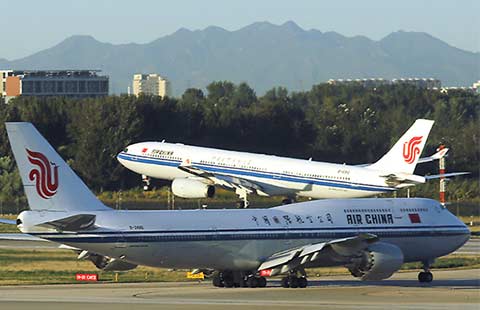Wind firms in doldrums
By Liu Yiyu in Shanghai (China Daily) Updated: 2012-05-31 10:14
|
 |
|
Crews work on an offshore wind power station in Rudong, Jiangsu province, in December. It is China's largest offshore wind plant. [Photo / China Daily] |
Despite the nation's ambitions to promote the development of offshore wind power, domestic companies in the industry see little progress on the horizon.
"The second round of bidding for offshore concession projects, which had been scheduled to start in the first half of 2012, is likely to be put off due to significant delays in the first concession projects," said Shi Pengfei, vice-president of the China Wind Energy Association.
The second group of concession projects, totaling up to 2 gigawatts, are to be built in Jiangsu, Hebei, Shandong, Zhejiang and Guangdong provinces.
According to the National Energy Administration, China will build 5 gW of offshore wind projects by 2015. But Shi said delays may mean missing the target.
China's installed offshore wind power capacity was only 258 megawatts last year, statistics from the Global Wind Energy Council show.
That was a small share of the global offshore wind power market, although China's onshore wind power capacity is the world's largest reaching almost 63 gW last year, according to data from the council.
In 2010, China awarded four contracts in the first round of bids to construct 1 gW of wind capacity in offshore and inter-tidal (shoreline areas exposed at low tide) concession projects that were to be completed in four years.
However, construction hasn't started on the projects.
"A lack of coordination among different government bodies" was one cause of the delays, said Liu Qi, deputy general manager of Shanghai Electric Wind Power Equipment Co, a wind turbine manufacturer.
Industry participants also mention site changes, environmental issues and low feed-in tariffs as reasons for the lack of progress. Feed-in tariffs are long-term cost-based arrangements meant to encourage renewable generation.
Since China's wind farm developers were competing for the first offshore projects regardless of price to get a foothold in the market, the average feed-in-tariff was only about 0.7 yuan (11 US cents) per kilowatt hour, which barely covers costs.
"Investors can barely make money at that price," said Zhang Fangyu, project director at China Datang Corp Renewable Power Co, which took part in the first round of bidding.
Benchmark feed-in tariffs for onshore wind farms range from 0.51 to 0.61 yuan per kWh. Industry officials say that offshore wind farm construction costs mainly arise from facilities such as turbines and installation costs.
Facilities account for up to one-third of the total wind farm construction costs.
An economically viable offshore feed-in tariff should be at least 0.8 yuan per kWh, according to turbine makers and wind farm operators.
China's only offshore wind farm in commercial operation is the Shanghai East Sea Bridge Offshore Wind Farm, totaling 102 mW. It went into operation in June 2010. The feed-in tariff for this project was 0.978 yuan per kWh.
"The government will review the first four offshore projects and changes in the feed-in tariff are likely," said Li Junfeng, president of the China Renewable Energy Industries Association.
liuyiyu@chinadaily.com.cn
- Homegrown technology shines at Beijing tech expo
- Talks on direct currency transaction between Ghana and China expected
- Mainland-Macao trade slumps in Q1
- HK-mainland trade drops in Q1
- China remains biggest investing country in Germany with new project number record
- China expands inspection to boost private investment
- China vows to strengthen manufacturing via internet
- China to cut prices of expensive patent drugs

















